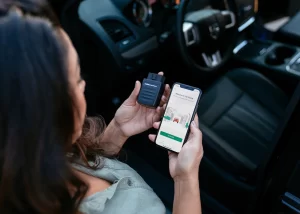EV drivers want a reliable charging experience. Whether at home and in multi-dwelling units, work and depot locations, or retail host sites, they need access to chargers that are always available. They also want complete transparency about charger availability and peak vs. off-peak pricing.
EV battery “preconditioning” uses smart energy management to heat or cool a vehicle’s battery for fastest charging times. It can also add to battery life in the long run.
Public Charging Stations
Public charging stations are used by EV drivers who don’t have home chargers or prefer to charge on the go. There are a number of government and private programs that provide incentives for businesses, community centers, municipal facilities, and other institutions to install EV charging ports on site.
Many EVs come with standard SAE J1772 connectors, but most public charging stations use the more advanced DC fast charging system that’s known as a CCS Combo connector or simply “CCS.” These are compatible only with select electric cars from Tesla and several other automakers.
EV drivers can find nearby public charging stations using mobile phone apps such as PlugShare, Zap-Map, Better Routeplanner, ChargeHub and EVgo. Some apps will even show whether a charging station is in use or available. Fleet managers and municipalities can also consider deploying onsite DC fast chargers for their light-, medium- and heavy-duty vehicles. These are more complex and expensive to develop and operate, but can provide much higher uptime performance and a greater ability to serve peak demand periods and off-peak hours for long-haul trips.
Residential Charging
The most economical charging solution is at home with a standard Level 1 charger (which plugs into a regular household outlet) or a faster Level 2 charger installed by a licensed electrician. These can also be equipped with a WiFi-ready connector, enabling remote monitoring, alerts and control via a mobile app.
Smart home chargers can monitor electricity use and can respond to peak demand times by shifting the rate of charge to a lower cost, off-peak hour (e.g., overnight). SMUD offers a residential charger rebate and installation assistance for eligible households.
EV owners can also participate in the EV Time of Use Rate for lower electricity rates during periods of low demand, typically after 7 p.m. and prior to 2 p.m. Several options are available for multifamily housing, including assigned parking spots and networked charging stations. These offer added benefits, such as load management and participating in utility demand response programs.
EV Charging Cables
Owning an electric vehicle is a big investment and it’s important to keep your charging cables protected from theft. This cable hook mounts next to your charger and secures the cord and plug when not in use. It also helps to make your charger less visible and a deterrent to would-be thieves.
There are many types of EV charging cables and plugs on the market. Some are faster than others, but they all connect your vehicle to an AC power source for refueling.
Choose a cable that has a thick, copper wire to improve electrical efficiency and reduce voltage drop over long distances. Look for safety certifications like CE, UKCA, UL and TUV to ensure compliance with electrical standards. And check for a warranty to protect your investment. EV chargers must be durable enough to withstand daily wear and tear, repeated coiling and uncoiling, and exposure to weather elements. EV charging cables must also pass rigorous digital testing to certify performance and quality.
Smart Charging
With smart charging, electric vehicles and chargers communicate with each other through data connections. After a driver plugs in, the charger recognizes the car and initiates a charging session with optimum energy utilization. It then monitors the battery charge to ensure the vehicle is fully charged when the session concludes, and bills the driver based on their agreed-upon terms. Smart charging solutions can also enable vehicle-to-grid (V2G) technology, which allows an EV’s battery to send power back to the grid, balancing the load and helping to reduce stress on the grid during peak hours.
EV drivers benefit from smart charging because it can reduce the cost of driving an electric vehicle and extend their battery’s life. For business owners with EV charging stations, it helps them avoid costly demand charges by balancing energy use with onsite storage and renewables like solar panels. Smart charging can also enable location-based energy pricing, which rewards EV drivers for using electricity generated at off-peak times to help reduce grid congestion.




